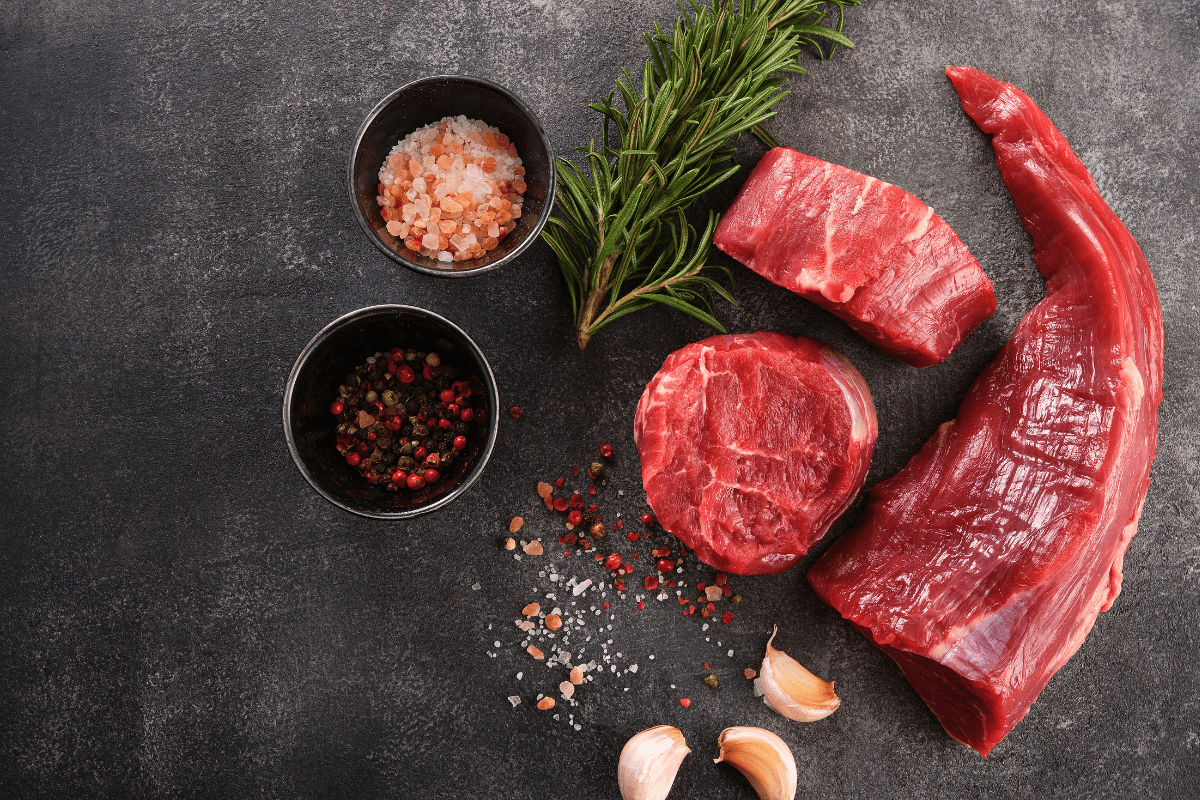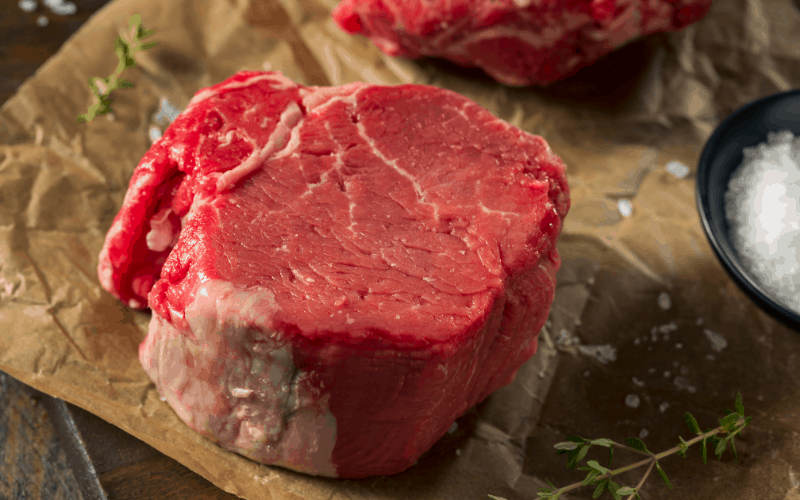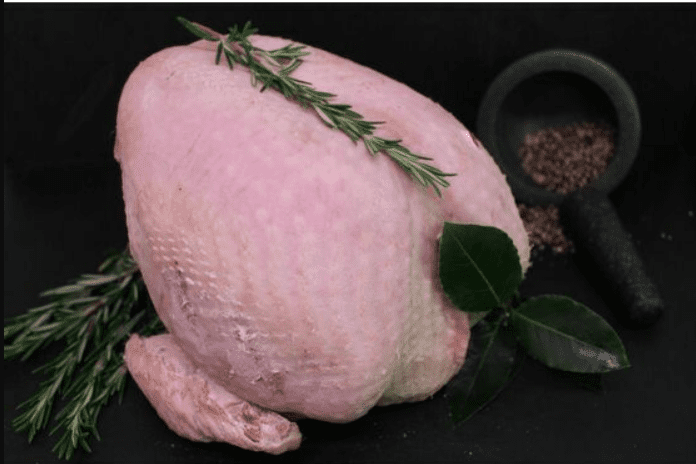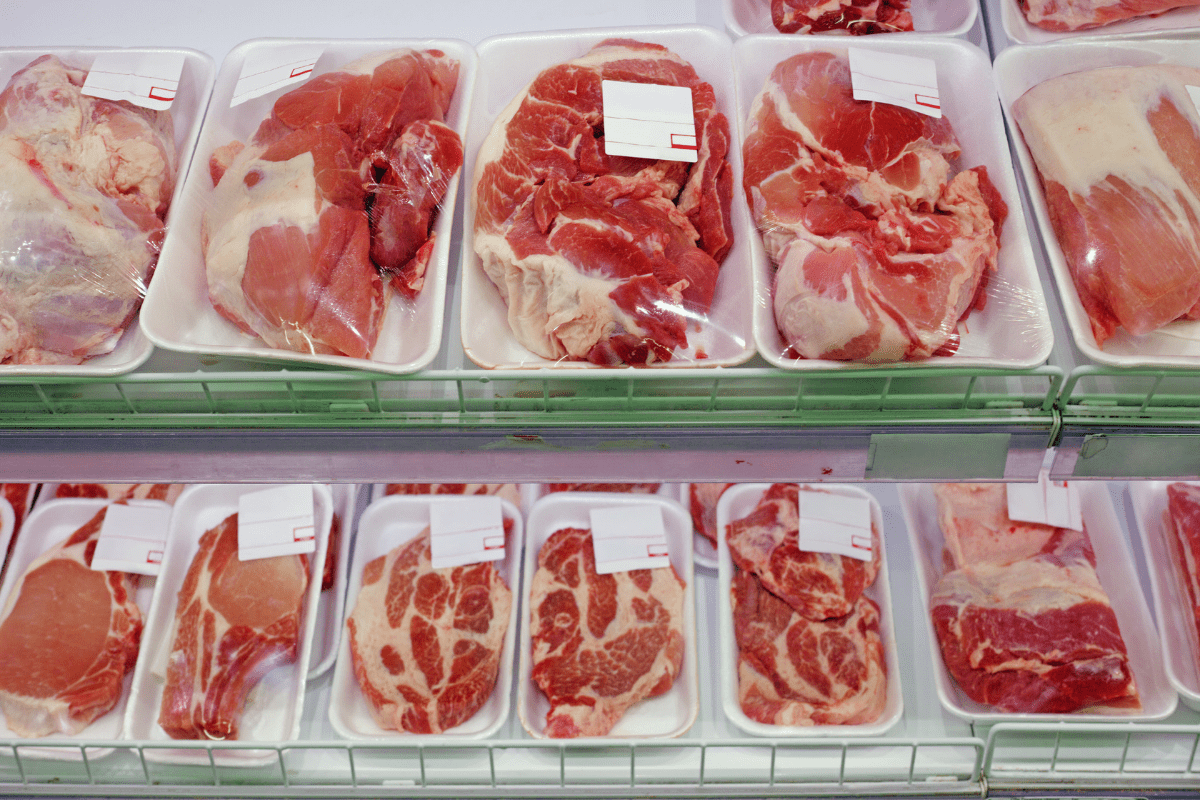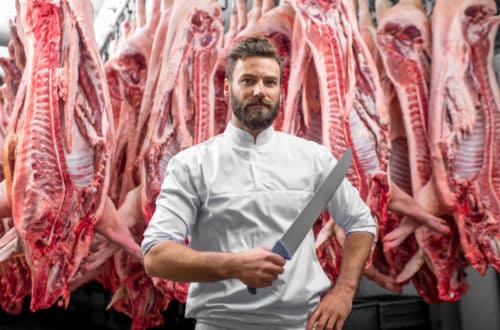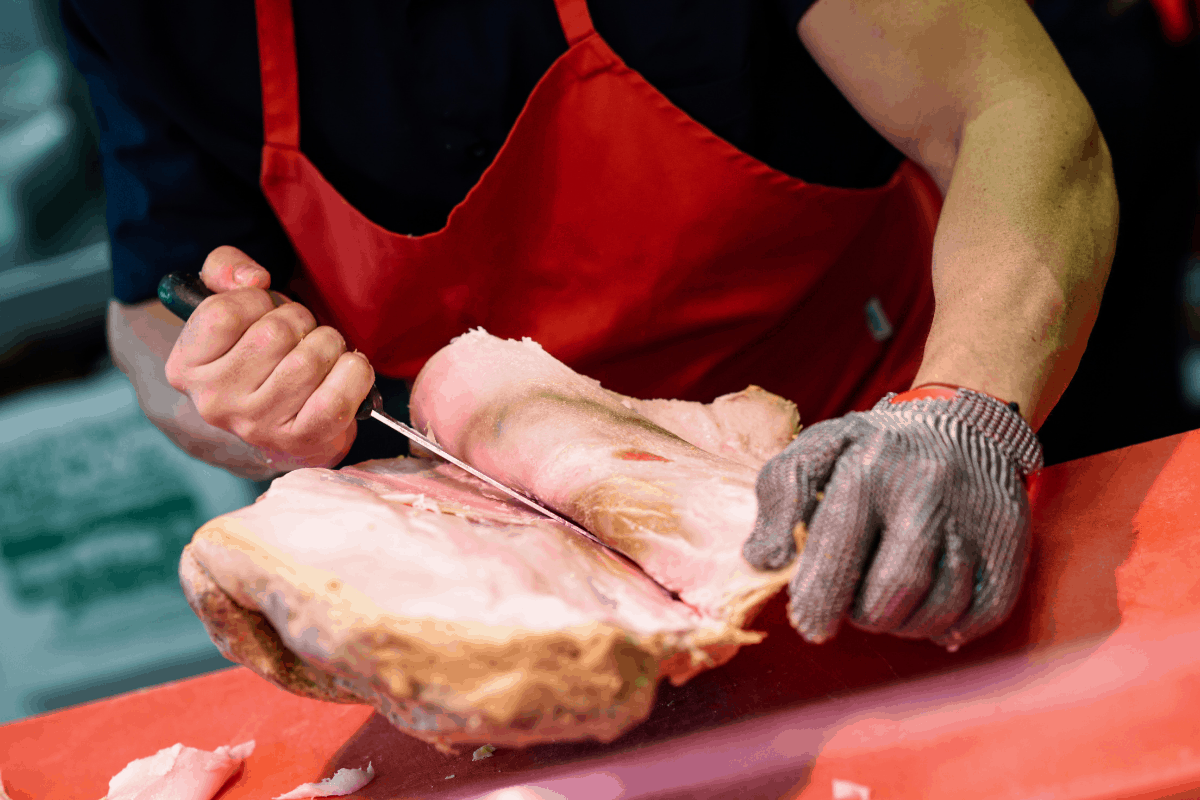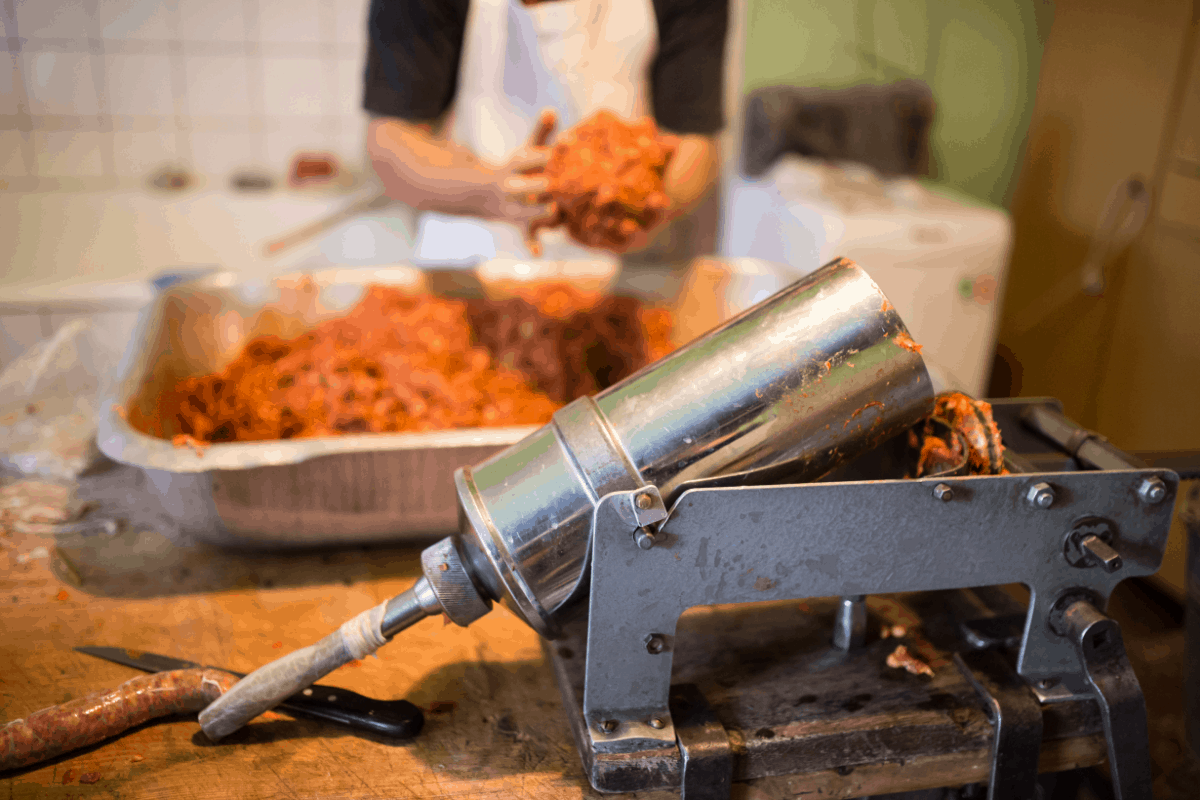Beef tenderloin and Filet Mignon is a very popular cut of meat, and just about the most expensive beef cut you can buy. So before spending the money, people have a lot of questions they would like answered.
This article covers the most often asked questions regarding the Beef Tenderloin and Filet Mignon.
Is Beef Tenderloin and Filet Mignon the same thing?
Although commonly described as the same cut of meat, the Beef Tenderloin is actually the whole cut of meat from head to tail. The Filet Mignon refers to the individual steaks taken from the centre cut part of the beef tenderloin.
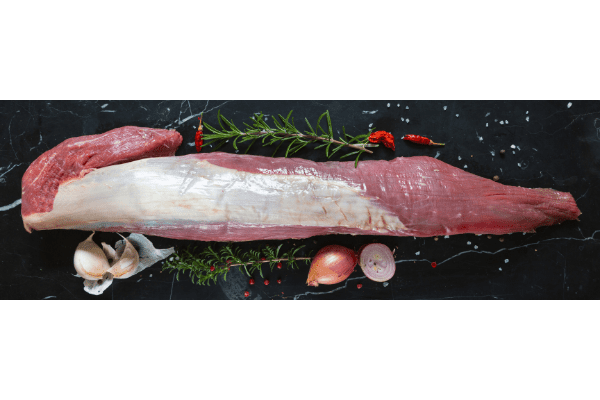
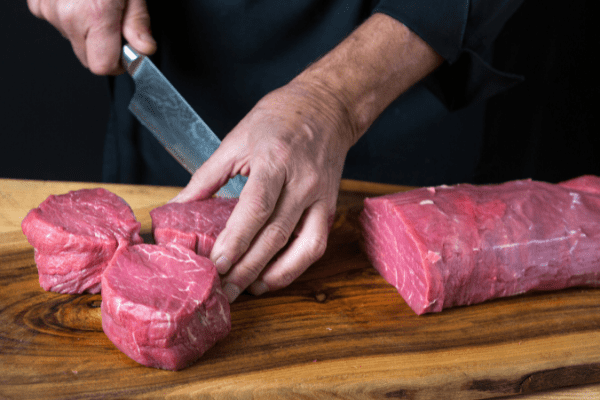
What Does Peeled and Unpeeled Tenderloin Mean?
Basically it means trimmed or untrimmed.
When the fat, silver skin and chain that surround the meat have been removed, it is often sold as ‘peeled’ meaning it has been trimmed ready to use.
When buying an ‘unpeeled’ tenderloin, you will need to trim the meat yourself to get it ready for cooking.
Although the cheaper price for the untrimmed meat may seem attractive, depending on how much ‘trim’ is left on the meat, it can be a false economy.
Unless you know what you are looking at, and are confident in your skills to remove the trim, I would always advise going for the trimmed option.
Are There Different Cuts On A Beef Tenderloin?
The whole beef tenderloin is usually divided into 3 different sections.
The Head or Tenderloin Butt
This is the widest part of the tenderloin and is found in the rump (top sirloin) end of the animal. There is a dividing part to the cut that is partially separated when the silver skin membrane is removed.
The Centre Cut
As its name suggests, this is the cylindrical centre of the tenderloin where the ‘real’ filet mignon steaks are taken from. The uniform shape and leaness of meat make this the most desirable part, and most expensive.
The Tail
This is where the beef tenderloin tapers down and becomes very thin at one end. It is difficult to cut steaks from this part and so it is often cut into strips to make dishes such as beef stroganoff or fajitas. If you are just buying the tenderloin tail, it is often sold up to 25% cheaper than the centre cut portion.

Is It Cheaper To Buy A Whole Beef Tenderloin?
Buying a whole beef tenderloin will certainly be cheaper than buying the individual steaks, however you will be getting the ‘tail’ which is not suitable to be served as steaks.
However, if you enjoy meals such as fajita’s and beef stroganoff, which typically use the tail, then buying the whole tenderloin could be a less expensive way for you to buy the prime steaks.
Make sure that you use all the trimmings for making taco’s or ground beef so that none of the meat is wasted.
A Video Showing How To Trim And Portion A Whole Beef Tenderloin
Why Is Filet Mignon So Expensive?
A fully trimmed beef fillet will usually weigh between 5-6lbs. The tenderloin also tapers down at one end, and so you can only expect to get about 8-10 nice steaks from one full tenderloin.
The Filet Mignon is the most popular steak on restaurant menu’s, and so the supply and demand creates an inflated price.
How Much Beef Tenderloin Per Serving?
An 8oz Filet Mignon is considered the standard steak serving size from a beef tenderloin. If you have big meat eaters then a 10-12oz steak is a very generous serving, and for smaller appetites a 5-6oz steak would be sufficient.
If you are serving a beef tenderloin roast then 5-6oz per person would be an appropriate serving, and if you were having the beef tenderloin as a starter then 3-4oz would be fine.
Should Filet Mignon Be Served Rare, Medium or Well Done?
How you cook and serve your beef tenderloin, all comes down to personal preference and your risk tolerence.
Filet Mignon can certainly be cooked and enjoyed rare, provided the internal temperature has reached at least 145oF, and rested for 3 minutes. This will be sufficient to kill any harmful bacteria that may be present on the meat.
Beyond this temperature, you are free to enjoy the steak to whatever doneness you prefer, however having the steak cooked medium or less will result in a more tender and moist steak than a well done steak offers.
Is Beef Tenderloin Healthier Than Other Steaks?
The beef tenderloin is a very lean cut of meat with very little fat, and so compared to the more fatty Rib-eye steak, it would make it the healthier option if you were monitoring your fat intake.
However, this does come with the downside to flavor, as fat is where the flavor comes from. This is why you will often see filet mignon offered with a steak sauce, to add the flavor that it lacks from the absence of fat.
If you choose to enjoy a steak once in a while, you may as well choose the cut you will enjoy the most, rather than choosing the filet mignon just because it is leaner. Moderation is the key, and a little fat will not hurt you if included as part of a balanced diet.
Why Is Beef Tenderloin Tied?
The beef tenderloin is usually tied to help the meat stay as a uniform shape to ensure even cooking.
Sometimes when the silverskin is removed, the head of the tenderloin can become partially detached and so is tied into place.
Equally, if the whole tenderloin is being cooked, the tail is often folded under and tied to make it as thick as the rest so it does not become overcooked and dry.
Why Is Bacon Wrapped Around The Filet Mignon?
Bacon is added to the beef tenderloin to serve two purposes. Adding flavor and basting.
Due to the extreme leanness of the tenderloin, the lack of fat means that the meat can easily dry out during cooking, and the meat can seem a little lacking in flavor.
Wrapping in bacon allows the fat from the bacon to add flavor to the meat whilst keeping it from drying out.
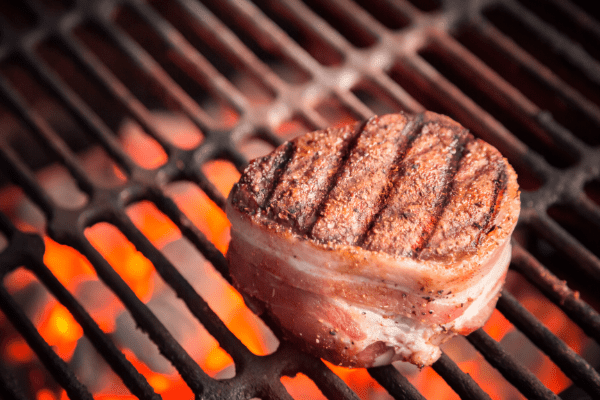
Should I Let My Tenderloin Reach Room Temperature Before Cooking?
Yes.
Removing the meat from the refrigerator at least 30mins prior to cooking will allow the meat to reach room temperature and allow for more even cooking.
When cooking steaks that have come straight out of the refrigerator, it takes longer for the centre of the meat to cook, meaning that there is a danger that the outside of the steak will become overcooked.
Can You Eat Filet Mignon When Pregnant?
There is no reason you cannot enjoy eating Filet Mignon whilst pregnant, providing it is not cooked rare. Ensure that an internal temperature of 160oF/72oC has been reached during cooking, and any harmful bacteria that may have caused an issue will have been destroyed.
There is a more in depth article over on pregnancyfoodchecker.com
Can Beef Tenderloin Be Cooked In A Slow Cooker or Croc Pot?
No, Beef Tenderloin is far too good a cut of beef to be used for slow cooking.
Due to the extreme leanness and tenderness of the meat, the beef will most likely cook away to nothing if your were to do it in a slow cooker.
Slow cookers are great for tougher cuts of beef such as the chuck, shin or brisket.
Here is our article on the 7 best cuts to use for slow cooking.
What Is The Silver Skin on a Tenderloin?
The ‘silver’ skin on the tenderloin is a thin gristle type membrane that covers the top of the meat. It is so called due to its silver looking coloring.
This membrane should be removed during the trimming process as it does not break down during cooking and is very chewy. It will ruin your steak eating experience if it is not removed.
Why Is My Filet Mignon Steak Tough?
The filet mignon is the most tender part of the animal, and so finding a tough steak is quite rare.
If you do have a tough steak, it is probably due to being very overcooked, or not trimmed properly.
If your steak is served without the silver skin being trimmed off, then no amount of chewing is going to break that membrane down. This may seem as though the meat is tough but it is actually the membrane that is causing the issue.
Overcooking can toughen the meat to, so always try to cook your steaks to a maximum internal temperature of 160oF/72oC or LESS! This will ensure any risk from harmful bacteria is destroyed, without the meat being too cooked to enjoy.
